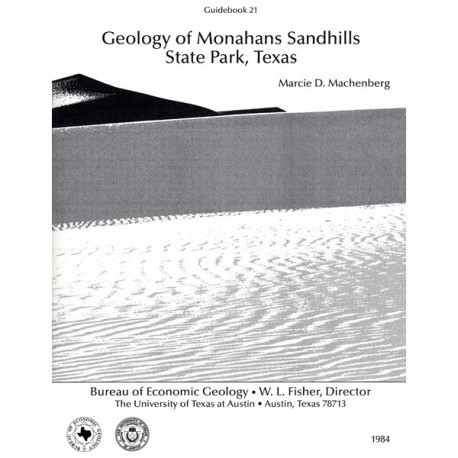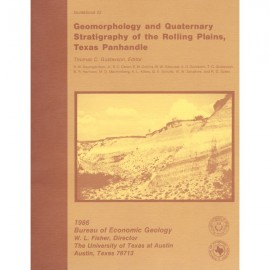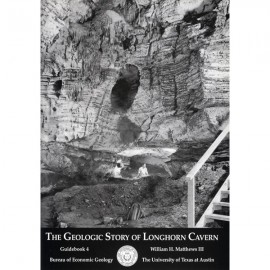Guidebooks
-
Books & Reports
- Reports of Investigations
- Guidebooks
- Udden Series
- Geological Circulars
- Down To Earth
- Atlases of Major Oil and Gas Reservoirs
- Texas Memorial Museum Publications
- Environmental Geologic Atlas of the Texas Coastal Zone
- Mineral Resource Circulars
- Other Reports
- Seminars and Workshops
- Handbooks
- Submerged Lands of Texas
- Symposia
- Annual Reports
- Open File Reports
-
Maps & Cross Sections
- Thematic Maps
- Miscellaneous Maps, Charts & Sections
- Geologic Atlas of Texas
- STATEMAP Project Maps
- Geologic Quadrangle Maps
- Cross Sections
- Highway Geology Map
- Energy and Mineral Resource Maps
- Shoreline Change and Other Posters
- Wilcox Group, East Texas, Geological / Hydrological Folios
- Bouguer Gravity Atlas of Texas
- River Basin Regional Studies
- Featured Maps
- Posters
- Teachers & the Public
-
Geological Society Publications
- Gulf Coast Association of Geological Societies
- Alabama Geological Society
- Austin Geological Society
- Corpus Christi Geological Society
- Houston Geological Society
- Lafayette Geological Society
- Mississippi Geological Society
- New Orleans Geological Society
- South Texas Geological Society
- GCS SEPM Publications
- Historic BEG & UT Series
Geology of Monahans Sandhills State Park, Texas
GB0021
Geology of Monahans Sandhills State Park, Texas, by M. D. Machenberg. 39 p., 20 figs., 1 plate, 1984. ISSN: 0363-4132. Print
A free, digital version of this publication can be found on: Texas ScholarWorks
"Along the western margin of the Southern High Plains lies a belt of active and vegetated sand dunes created by windblown sands that began accumulating several thousand years ago. The dunes create a dynamic landscape that shifts in response to constantly changing winds. Ivory-colored sand creates a variety of dune forms, including long, sharp-crested ridges up to 85 ft (25 m) high and sandy hills anchored by a dense cover of native shin oak trees. The sandhills, with their specially adapted plants and animals, represent a unique environment.
Human fascination with the Monahans Sandhills began more than 10,000 yr ago. The dunes have meant many things to the peoples inhabiting this region. The sandhills sheltered abundant game hunted by nomadic Paleo-Indians, supplied water to modern Indians, and hindered westbound settlers in covered wagons. Today the sandhills offer a variety of opportunities for recreation and nature study to the many visitors of Monahans Sandhills State Park.
This guidebook provides the reader or park visitor with a better understanding of the origin of the sandhills, their geological characteristics, and the interactions between the physical and biological processes characteristic of the sandhills. It explains that the dynamic nature of the dunefield is a function of variables such as sand supply, precipitation, vegetation, complex local winds, and human occupation."
Citation:
Machenberg, M. D., 1984, Geology of Monahans Sandhills State Park, Texas: The University of Texas at Austin, Bureau of Economic Geology, Guidebook 21, 39 p.







